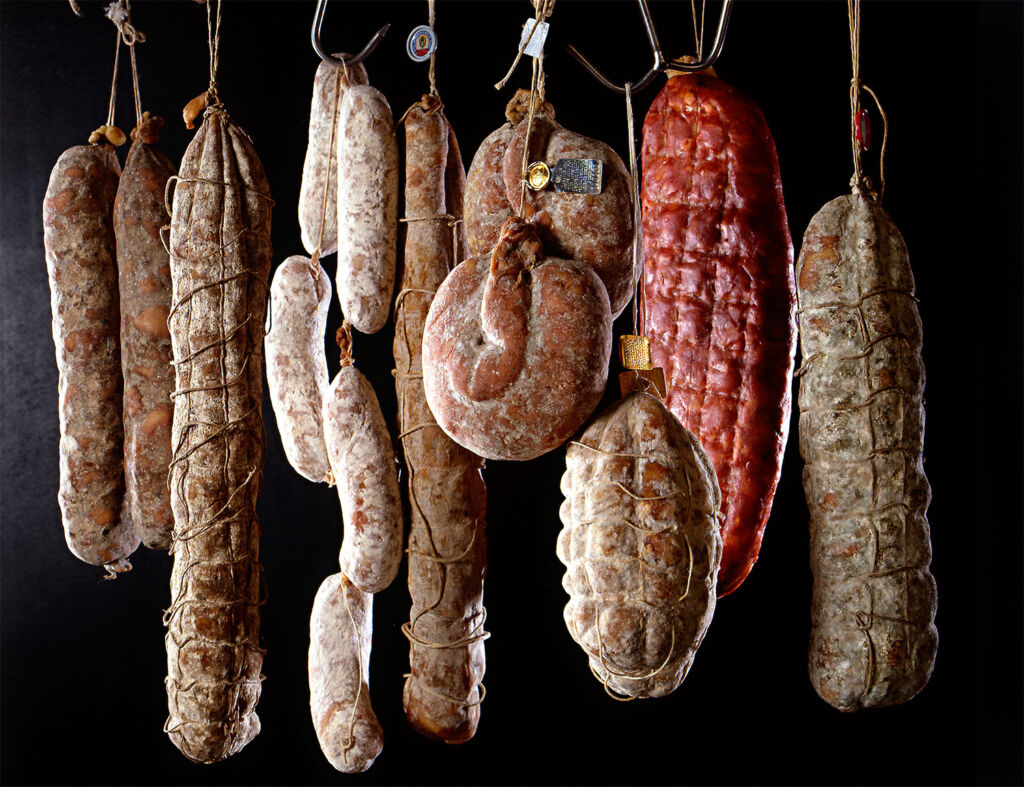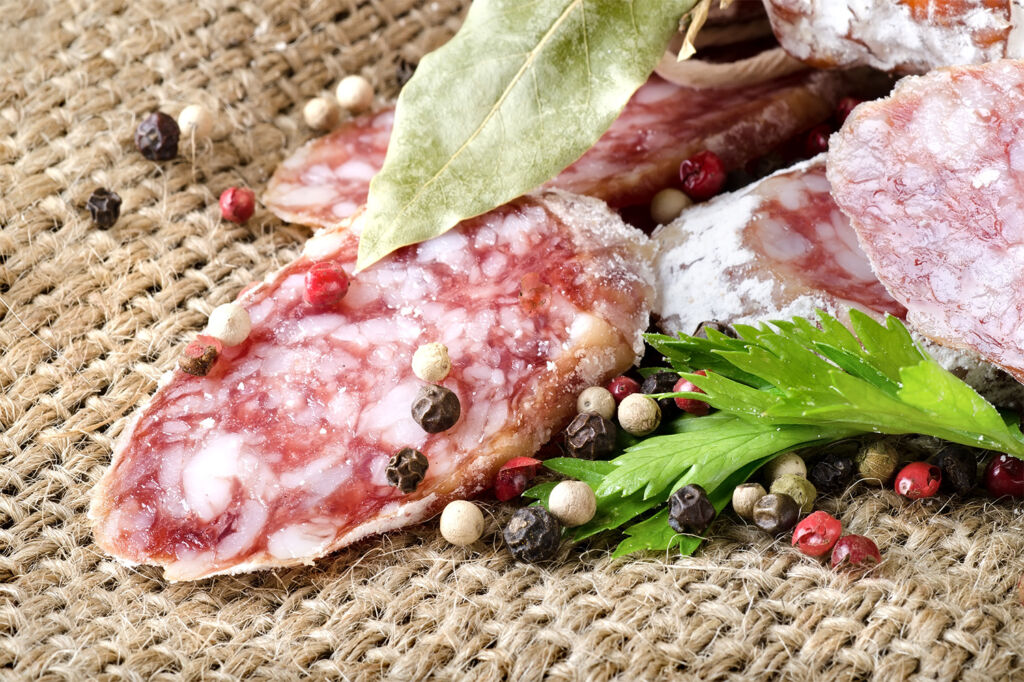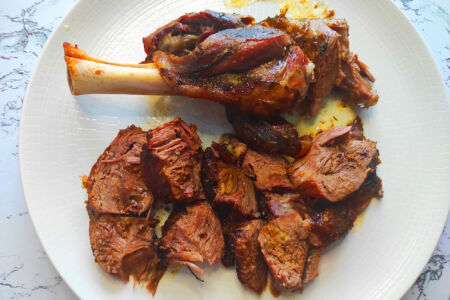The History of Salami
Salami is a sausage that was invented in Italy. In the original idea, it was made from a mixture of chopped pork and salt, which was carefully air dried in a case, but mass production turned it into a semi-finished product either for sandwiches and pizza.
Make Homemade Salami (Video Recipe)
Homemade salami - made at home, naturally, only with salt and spices, without other additives.
The name "salami" comes from the Italian word salare, which means "to salt".
In general, this word hides not one particular type of sausage, but a whole "family", this is a term describing any type of meat product in case. Like many other Italian foods, salami has a long history, dating back to before Ancient Rome. Over the centuries, many variations have appeared on the theme of this type of sausage, each region has its own and sometimes even more than one.
The History of Salami
Origins
In Italy, pork has been eaten since the very foundation of the state. Initially, animals were raised exclusively to meet the needs of a family or village. It was only during the Etruscan period that the first forms of non-nomadic breeding began to develop, for example, for trade. An interesting find was made by archaeologists, during the excavations of Forcello (V century BC) in the province of Mantua, 50,000 animal bones were found, 60% of which are pigs.
Their study showed that the animals were about 2-3 years old, but the bones of the hind legs were almost completely absent. It was probably then that sausages were invented!

Roman Times
During the Roman Empire, pork legs were very popular. Ham was the most valuable pork product and the protagonist of numerous social and festive events.
The History of Salami In Middle Ages
During the raids of the barbarians, pigs became one of the most important resources for the villagers.
Shovel, ham, and pancetta were sometimes equated with currency. In the Middle Ages, pig grazing was so important that the size of forests was measured not by their length, but by the ability to feed the pigs.
Rebirth
Over the centuries, pig breeding and the consumption of pork products gradually gained even more importance, the art of gastronomy develops, pork appears on the most luxurious banquet tables, this happens until the 19th century, when the first culinary workshops and sausage shops were opened.
Pressed Chicken Cold Cut Recipe (Video)
Homemade pressed chicken cold cut simple recipe step by step. Preparation without additives, preservatives and dyes.
In the XII-XVII centuries in Italy, they pay a lot of attention to the processing of pork, the whole country consumes and processes meat at an accelerated pace.
During this period, a special profession appeared - norcino (a butcher specializing in pigs from Norcia). The Norcini unite in guilds and fraternities, invent and prepare new sausages. Over the course of several years, such associations became very famous, Pope Paul V in 1615 recognized the Norcini Brotherhood, dedicated to Saints Benedetto and Scolastica.
At that time, methods of canning fresh meat did not yet exist, so the work of the Norcini was seasonal - pigs were slaughtered only once a year, butchers were busy from October to March, and at other times they returned to normal life - they sold hay or garden tools.
However, the popularity of the butcher profession did not fade until the end of World War II.

Modernity
Today salami is not one particular sausage, but a term describing a type of meat product in a casing. Each type of salami is made in a special way, they differ in the fineness of the minced meat, each variety has a different consistency and a mixture of spices.
However, there are rules that are obligatory for all types of salami: the meat must be well sealed, the inside must be red or pink with small grains of white fat, and these fatty pieces must not come off the meat when slicing.
Famous Salami's History From The World
Salami is popular all over the world, and analogues of the famous Italian sausage have appeared in different countries.
The History of Salami In Turkey
Afyon sucuġu sausage with spices, known worldwide as sujuk, is very popular, traditionally produced in the Turkish province of Afyonkarahisar. Sujuk is a halal product consisting of ground beef flavored with caraway seeds, sumac, garlic, salt, pepper, paprika and thyme.

The History of Salami In Hungary
Hungarian salami Gyulai kolbász is very popular in many countries of the world. It is a slow-smoked sausage made from pork meat, minced with fat, and mixed with salt, hot and soft ground pepper, caraway seeds, garlic, and salt. Thin and long sausages (18-26 centimeters long) are usually sold in pairs.
Russia
Russia also has its own salami varieties. They are prepared according to recipes close to classic ones - from pork, salt, pepper and spices. Some manufacturers have achieved excellent success.
The History of Salami In Romania
Babic is a traditional Romanian dry-cured salami native to Buzau County. Although some variations contain lamb, this salami is usually made from a mixture of pork and beef, seasoned with salt, bell pepper and hot pepper, then placed in a thin beef casing, pressed, smoked and dried during the cold winter months. The taste of the salami depends on the amount of hot pepper that is added during cooking.




